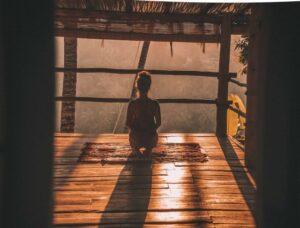Crackling flames, the warmth of glowing embers, and the enchanting dance of firelight—campfires have been an essential part of human history, providing not just physical comfort but also a primal connection to the wilderness. Whether you’re an experienced outdoors enthusiast or a novice camper, mastering the art of building and maintaining a campfire is a fundamental skill that enhances your outdoor adventures.

In this guide, we’ll delve into the secrets of creating a safe and sustainable campfire, ensuring that your fireside moments are not only enjoyable but also environmentally responsible. So, gather around as we explore the essential techniques and knowledge for mastering the campfire experience.
Don’t know how to start a Campfire? You came to the right place!
Absolutely, if you’re new to the world of campfires or just looking to refine your skills, you’re in the perfect spot! Campfires can be a source of warmth, a way to cook delicious meals, and a focal point for camaraderie during outdoor adventures. In this guide, we’ll walk you through the steps to start a campfire safely and efficiently. So, let’s dive in and ignite your campfire knowledge!
Different Types of Campfires
Tepee or Cone
The Tepee or Cone campfire is a classic and straightforward choice for campers. Its conical shape allows for good airflow, promoting efficient burning. To create it, start by placing a bundle of kindling in the center, forming a tepee or cone shape. Then, stack smaller twigs and branches around the kindling, gradually increasing the size of the wood as the fire grows.
This design concentrates the heat in the center, making it ideal for quickly boiling water or cooking food. However, it may require more attention to maintain and feed the fire as it burns from the top down. Always follow safety precautions and keep a water source nearby when building any campfire.

Log Cabin
The Log Cabin campfire is named for its square or rectangular structure, allowing for efficient combustion and long burn times. It’s ideal for cooking due to its stable top logs, making it great for campfire meals. Constructing it involves layering logs alternately, with each layer perpendicular to the one below. While it takes some effort to build, its durability and cooking capabilities make it popular among campers.
Remember safety precautions like clearing the area of flammables and having water or a fire extinguisher nearby. Mastering the Log Cabin campfire enhances outdoor cooking and camping experiences.
Platform or Upside-Down Pyramid
The Platform or Upside-Down Pyramid campfire is another versatile option for campers. Its flat surface is perfect for cooking as it provides a stable platform for pots and pans. To create it, place a layer of larger logs on the ground parallel to each other, then add a second layer perpendicular to the first, and so on until you have a raised platform. Finally, ignite your fire source underneath. This design ensures good airflow, promoting efficient combustion.
While this campfire type requires some initial effort, it offers excellent cooking capabilities and consistent warmth, making it a valuable skill for outdoor enthusiasts. Always prioritize safety by clearing the area of flammable materials and having firefighting tools nearby.
Star
The Star campfire, also known as the Indian fire or open fire lay, offers an efficient and visually striking way to build a fire. To create this unique campfire, place a large log at the center and surround it with smaller logs, sticks, or branches in a star-like pattern. As the fire burns, the logs will catch fire from the center outward, resembling a starburst.
The Star campfire is not only aesthetically pleasing but also practical for cooking, as you can adjust the cooking temperature by moving pots and pans closer to or farther from the center. Additionally, this type of fire provides a stable base for supporting larger cookware.
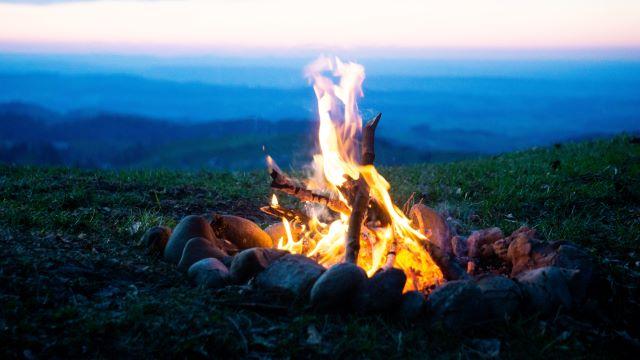
Remember to follow fire safety guidelines when building a Star campfire and ensure you have adequate clearance from flammable materials. Always have a means of extinguishing the fire nearby, such as water or a fire extinguisher, and never leave a campfire unattended.
Preparing for a Campfire: What materials you will need
Tinder
To ignite a campfire successfully, you’ll need the right materials, and tinder is a crucial component. Tinder refers to highly flammable materials that catch fire easily from a spark or a small flame. It serves as the initial fuel to get your fire going. Here are some common types of tinder you can use:
- Dry Leaves: Fallen, dry leaves are readily available in most outdoor settings and make excellent tinder. They ignite quickly and can help ignite the larger fuel.
- Grass and Thistle Down: Fine, dry grass and thistledown can be collected and bundled together to create an effective tinder bundle.
- Birch Bark: The papery bark of birch trees is highly flammable and can be easily peeled off and shredded to create a tinder.
- Cotton Balls or Cotton Pads: Cotton balls or makeup remover pads soaked in petroleum jelly are excellent homemade tinder options. They burn slowly, giving you more time to ignite the larger fuel.
- Dry Pine Needles: Pine needles tend to be resinous and can catch fire easily. They work well as tinder when dry.
- Firestarter Sticks: Commercial firestarter sticks or firestarter cubes can be used as tinder. They are designed to catch fire quickly and burn for an extended period.
- Char Cloth: Char cloth is a piece of fabric (usually cotton) that has been charred in a low-oxygen environment. It ignites readily from a spark and can be used as a tinder.
When gathering tinder materials, ensure they are dry, as damp or wet tinder will be challenging to ignite. It’s a good practice to prepare your tinder before you start your fire-making process, so you have it readily available when needed. Remember that the success of your fire often depends on the quality and dryness of your tinder, so choose your materials wisely.
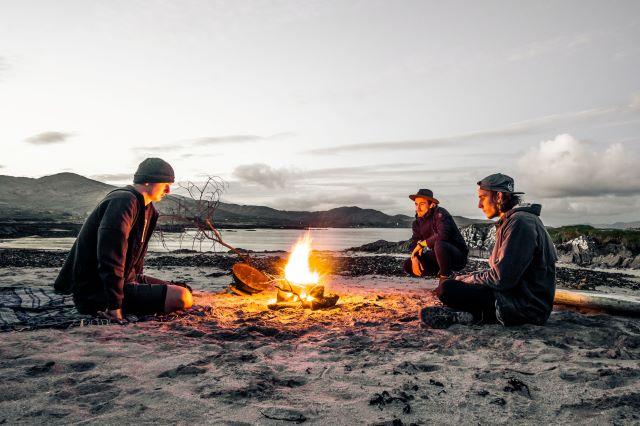
Kindling
Kindling plays a critical role in transitioning your campfire from a small flame generated by the tinder to a sustainable, roaring fire. Kindling consists of small sticks, twigs, or branches that are larger than tinder but still smaller than the main fuel logs. Here’s what you need to know about kindling:
- Size Matters: Kindling should be about the diameter of a pencil or slightly larger. These thin sticks ignite easily and burn quickly, making them ideal for building up the fire.
- Dry and Debris-Free: Just like tinder, your kindling needs to be dry to catch fire effectively. Avoid using damp or green twigs, as they won’t ignite as readily.
- Plenty of Oxygen: Ensure that there’s adequate airflow around your kindling. This allows the flames to spread and grow, gradually heating the larger fuel.
- Layer It: Start with a small pile of kindling above your tinder. As the kindling ignites, add more in a crisscross pattern to create a stable structure.
- Gradual Progression: Begin with the smallest twigs and gradually work your way up to slightly thicker pieces. This ensures a smooth transition from kindling to larger fuel.
- Safety First: Be cautious not to smother your fire with too much kindling or fuel too quickly. Maintain control over the fire’s size as it grows.
Kindling serves as the bridge between the initial ignition from the tinder and the sustained burn of larger logs or fuelwood. Properly arranged and ignited kindling ensures that your campfire gets off to a strong start and provides the warmth, light, and cooking capabilities you need in the wilderness.
Firewood
Firewood is the primary source of fuel for your campfire. Choosing the right type and preparing it properly can significantly impact your campfire’s longevity and heat output. Here’s what you need to know about firewood:
- Selecting the Right Wood:
- Hardwoods vs. Softwoods: Hardwoods like oak, maple, and hickory burn hotter and longer, making them ideal for sustained campfires. Softwoods like pine, cedar, and spruce ignite easily but burn faster.
- Dryness: Use seasoned firewood with low moisture content. Freshly cut or damp wood can be challenging to ignite and produce excessive smoke.
- Preparing Firewood:
- Cut and Split: Firewood should be cut into manageable lengths and split into smaller pieces. This exposes the dry inner wood and makes it easier to ignite.
- Safety Check: Inspect firewood for signs of insects or rot, which can pose hazards when burned.
- Storing Firewood:
- Keep It Dry: Store firewood off the ground and cover it with a tarp or shelter to protect it from rain or snow.
- Adequate Supply: Ensure you have enough firewood to last the duration of your campfire. Running out of wood can be inconvenient and disrupt the camping experience.
- Arranging Firewood:
- Layering: Lay your firewood in a stable, crisscross pattern above the kindling and tinder. This allows for adequate airflow and promotes efficient burning.
- Gradual Addition: Start with smaller pieces and gradually add larger logs as the fire establishes itself.
- Safety Considerations:
- Maintain Control: Always have a way to control the fire’s size, such as a shovel or fire extinguisher.
- Extinguish Properly: When you’re done, thoroughly extinguish the fire by dousing it with water and stirring the embers. Make sure it’s cold to the touch before leaving.

Choosing and preparing the right firewood is essential for a safe and enjoyable campfire experience. It ensures that your fire burns efficiently, provides warmth, and minimizes the impact on the environment.
Spark or Flame Source
A spark or flame source is the initial ignition point for your campfire, crucial for starting the fire. Here’s what you need to know about selecting and using a spark or flame source:
- Types of Spark or Flame Sources:
- Lighter: A disposable or refillable lighter is one of the easiest and most convenient options. It produces a controlled flame that you can direct onto your tinder.
- Waterproof Matches: These matches are designed to withstand moisture, making them ideal for outdoor use. They often come in a waterproof container.
- Firestarter Sticks: These compact sticks are impregnated with flammable substances. You can ignite them with a spark from a striker or another fire source.
- Ferrocerium Rod: Also known as a fire starter or fire steel, this rod creates sparks when scraped with a sharp edge. It’s a reliable option for starting fires in various conditions.
- Magnesium Fire Starter: Combining a magnesium rod and a striker, this tool generates sparks and shavings of magnesium, which ignite readily. It’s useful for starting fires in damp conditions.
- Preparing Your Spark or Flame Source:
- Check for Functionality: Ensure that your spark or flame source is in working condition before your trip. For example, make sure your lighter is filled, matches are dry, or ferrocerium rods are not worn down.
- Keep It Dry: Protect your spark or flame source from moisture by storing it in a waterproof container or sealing it in a plastic bag.
- Using Your Spark or Flame Source:
- Ignition Sequence: Begin with your spark or flame source near your tinder, and gradually move it closer to ignite the tinder. Once the tinder is burning, you can add kindling and firewood.
- Safety: Use caution when igniting the fire, ensuring that your spark or flame source does not accidentally ignite nearby objects or clothing.
- Backup Options:
- Always Carry Spares: It’s wise to carry backup spark or flame sources, especially on longer trips. Having redundancy can save you from potential fire-starting challenges.
- Environmental Considerations:
- Respect Fire Bans: Check for any fire bans or restrictions in the area you plan to camp. In some regions, fires may be prohibited during dry or high-risk periods.
See also: 20 Ways to Light a Fire Without a Lighter (Old & New Methods)
A reliable spark or flame source is essential for starting a campfire safely and efficiently. Depending on your preference and the conditions you expect to encounter, choose the most suitable source to ensure a successful ignition and enjoyable outdoor experience.
Building a Campfire: Step by Step
Choose a Safe Spot
Selecting the right location for your campfire is the first and most crucial step in building a safe and responsible fire. Here’s what you need to consider:
Select a location at least 15 feet (4.5 meters) away from tents, trees, shrubs, and other flammable objects. Be sure to check for local regulations regarding campfires and any fire bans during dry seasons. Maintain a safe distance from windy areas, and choose a spot shielded from strong gusts, such as behind natural windbreaks like rocks or hills. Remove dry leaves, grass, or debris from the chosen spot and clear a circle about 8-10 feet (2.4-3 meters) in diameter down to the bare soil.
Check for overhanging branches or vegetation and ensure there is a clear area above the fire site to prevent sparks from igniting nearby foliage. If possible, set up your campfire within easy reach of a water source, such as a lake, river, or bucket of water. This allows you to quickly douse the fire if needed. To further contain your campfire, you can create a ring of rocks or use a fire pan designed for this purpose. This additional layer of containment adds safety.
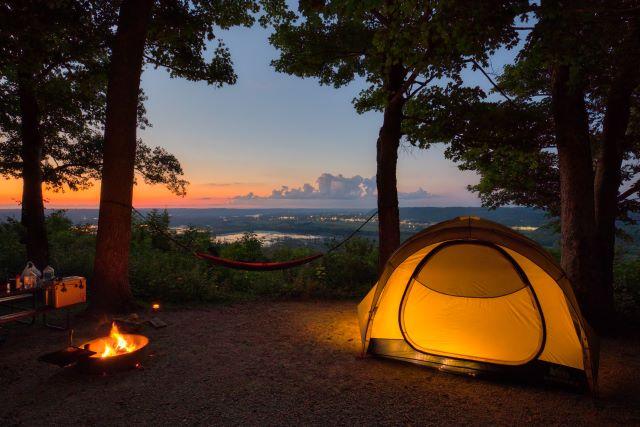
By carefully selecting a safe location for your campfire, you reduce the risk of accidents and wildfires. Remember that responsible campfire practices help preserve natural environments and keep outdoor spaces enjoyable for everyone.
Create a Tinder bed
Once you’ve chosen a safe spot for your campfire, the next step is to create a tinder bed. Tinder is a highly flammable material that ignites easily from a spark or flame. Here’s how to prepare it:
Gather a small pile of fine, dry materials that can serve as tinder. This can include dry leaves, grass, small twigs, or pieces of bark. Ensure that your tinder is as dry as possible, as a damp tinder can make ignition difficult. Arrange your tinder in a loose, bird’s nest-like shape.
This shape allows air to circulate and helps the fire catch quickly. You can also use commercially available fire-starting aids, such as firestarter sticks or cotton balls soaked in petroleum jelly, as effective tinder options. Place your tinder bed in the center of your fire ring or chosen fire area. This is where you’ll focus your initial flames to get the fire going.
Creating a proper tinder bed ensures that your campfire will start easily and burn consistently. Remember to keep an additional tinder nearby to add to the fire as it grows.
Add the Kindling
Now, it’s time to introduce kindling to the fire. Kindling includes small, dry twigs or sticks that catch fire from the tinder, helping the flames grow. Arrange the kindling over the burning tinder in a teepee or cone shape. Leave an opening on the windward side to promote airflow and fire growth.
Begin with the smallest kindling pieces and work your way up gradually. This step-by-step approach ensures the fire gains strength steadily. Avoid overwhelming the fire with too much kindling at once. Patience is key; it may take a few attempts or adjustments to get the flames going. Keep adding small kindling pieces as the fire burns, ensuring a robust and long-lasting campfire.
Build your Fire
With the kindling burning steadily, it’s time to add larger pieces of firewood. Place the logs, branches, or split firewood onto the burning kindling in a careful, well-arranged manner. Gradually increase the size of the wood pieces as the fire grows stronger. The goal is to establish a good bed of hot coals and embers that will provide sustained heat.
Continue feeding the fire with progressively larger pieces of firewood to maintain a consistent flame. Remember to leave spaces between the logs to allow oxygen to reach the fire, ensuring it burns efficiently. Building your fire methodically helps maintain control and results in a long-lasting and warm campfire.
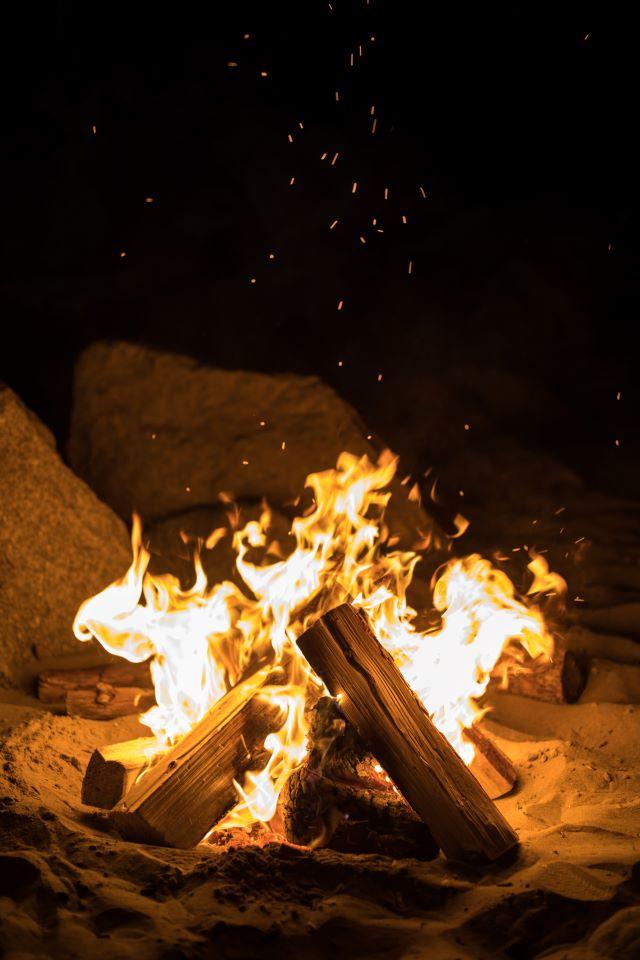
Here you go!
Now that you’ve successfully built and established your campfire, it’s time to sit back, relax, and bask in the warmth and ambiance of your creation. Whether you’re cooking, sharing stories with friends, or simply gazing into the mesmerizing flames, a well-built campfire can enhance your outdoor experience. Remember to keep a safe distance from the fire, tend to it as needed, and always follow proper fire safety guidelines. Enjoy the cozy atmosphere and the magic of a campfire in the great outdoors!
Maintaining a Campfire
Step 6: Maintaining Your Campfire
A campfire requires attention to keep it burning safely and efficiently. Here’s how to maintain your campfire:
- Keep an Eye on It: Never leave your campfire unattended. Assign someone to be responsible for watching the fire at all times.
- Add Fuel Gradually: As the fire burns, you’ll need to add more firewood or kindling to keep it going. Add small pieces of wood gradually to avoid smothering the flames.
- Control the Size: If the fire becomes too large or unruly, reduce its size by adding smaller pieces of wood. Use a long stick or fire poker to adjust the logs as needed.
- Maintain a Safe Distance: Ensure that you and any observers maintain a safe distance from the fire. Avoid leaning directly over it, and never reach into the flames.
- Extinguish Safely: When you’re ready to extinguish the fire, use water or dirt to douse the flames. Pour water slowly over the embers, stirring with a stick to ensure all embers are thoroughly wet. Continue this process until the fire is completely out, and you can comfortably touch the ashes.
- Leave No Trace: Finally, practice Leave No Trace principles by cleaning up after yourself. Scatter the ashes and any remaining firewood, leaving the area as you found it.

By following these steps and staying attentive to your campfire, you can enjoy its warmth and light while ensuring safety and responsible outdoor ethics.
Campfire Safety Measures
Use the pit
Using a designated fire pit is a crucial safety measure when building a campfire. It serves multiple purposes, including containment, protection against wind, and minimizing the environmental impact. If there’s no established fire pit, create a fire ring by clearing a circular area about 10 feet in diameter down to bare soil. Inside the pit or ring, place your campfire, keeping it well-contained.
Always monitor the fire closely and ensure it stays within the designated boundaries. When you’re finished, use water or dirt to thoroughly extinguish the fire, stirring the ashes and embers until everything is out. This responsible use of a fire pit helps maintain fire safety and preserves the environment for future generations to enjoy.
Build a safe campfire
Creating a safe campfire involves selecting the right spot, gathering necessary materials, and respecting fire regulations. If possible, use a designated fire pit or ring. Otherwise, dig a shallow pit and surround it with rocks. Gather tinder, kindling, and firewood before igniting the fire with matches or a lighter.
Build it gradually, starting with tinder and small kindling sticks, and maintain a manageable size. Never leave it unattended, and fully extinguish the fire before leaving. Always follow local fire regulations and respect the environment by not harming live trees for firewood.
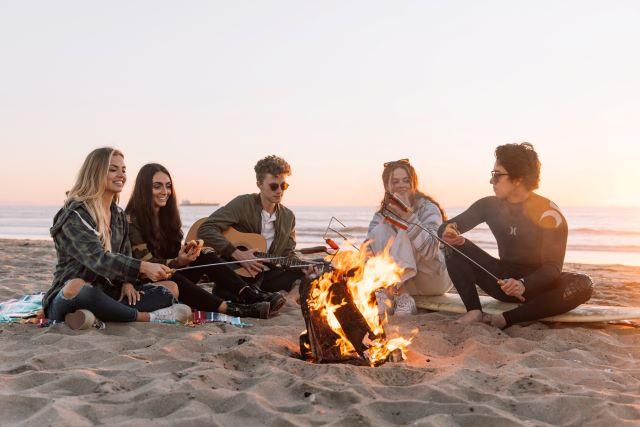
Mind the match
When lighting a campfire, it’s essential to exercise caution with matches or lighters. Make sure to store them in a waterproof container to keep them dry in outdoor conditions. When striking a match, do so away from your body and the direction of the wind to prevent the flame from blowing back towards you. After lighting the fire, safely store the matches or lighter back in their container to avoid accidental ignitions. It’s crucial to be mindful of fire safety to prevent accidents while enjoying your camping experience.
Use local firewood
Using local firewood is not only an eco-friendly choice but also a safer one when building a campfire. It helps prevent the spread of pests and diseases that can harm the local ecosystem. When gathering firewood from the area, make sure to choose dead and downed branches rather than cutting live trees or branches. This ensures that you’re leaving minimal impact on the environment. By using local firewood responsibly, you contribute to preserving the natural beauty of the outdoors for future generations to enjoy.
Keep water handy
Keeping water handy is a crucial safety measure when dealing with campfires. Whether you’re in a campground or the backcountry, having a readily accessible source of water can help extinguish flames if the fire gets out of control. A bucket, hose, or several large containers of water nearby can make a significant difference in fire safety. It’s essential to stay vigilant and ready to douse any flames that might pose a risk. Water is a valuable ally in ensuring your campfire remains under control and that you can enjoy a safe and pleasant outdoor experience.
Pay attention to the wind
Paying attention to the wind is a fundamental aspect of campfire safety. Wind can quickly carry embers and sparks, posing a fire hazard to the surrounding area. Before starting or tending to a campfire, assess the wind’s direction and strength. Position yourself and your fire so that the wind blows away from any flammable materials, such as tents, dry grass, or overhanging branches.
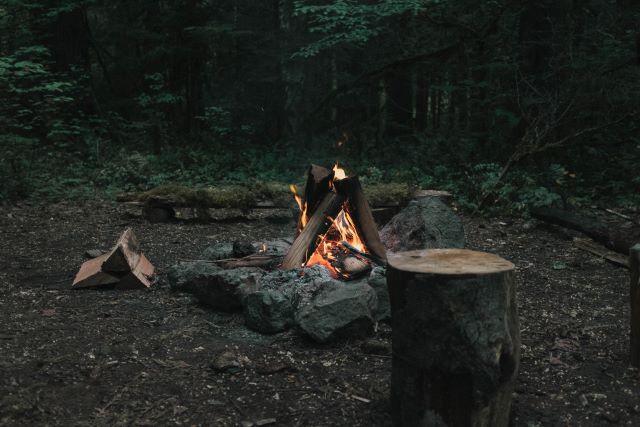
You can also use windbreaks, such as rocks or logs, to shield the fire from gusts. Staying vigilant about wind conditions helps prevent accidental fires and ensures a safe camping experience.
Be careful with kids and pets
Being cautious around kids and pets is crucial when you have a campfire. Young children and animals are naturally curious and may not fully understand the dangers of an open flame. To ensure their safety, establish a clear boundary around the campfire area.
Educate children about the hazards of fire and explain why they should never play near it without adult supervision. Keep a watchful eye on both kids and pets, especially if they are near the fire. Consider using a safety gate or designated play area to separate them from the fire’s vicinity.
Never leave a campfire unattended
Leaving a campfire unattended is risky. Ensure complete extinguishment before leaving: let it burn down to embers, pour water, stir, and soak until cool. Scatter ashes and debris to leave no trace, protecting nature and safety.
Final Thoughts
Campfires are not only a practical skill but also a source of warmth, comfort, and camaraderie in the great outdoors. By mastering the art of building and maintaining a safe fire, you not only ensure your well-being but also contribute to preserving nature’s beauty. Remember the safety measures, leave no trace, and enjoy the mesmerizing dance of the flames responsibly.




